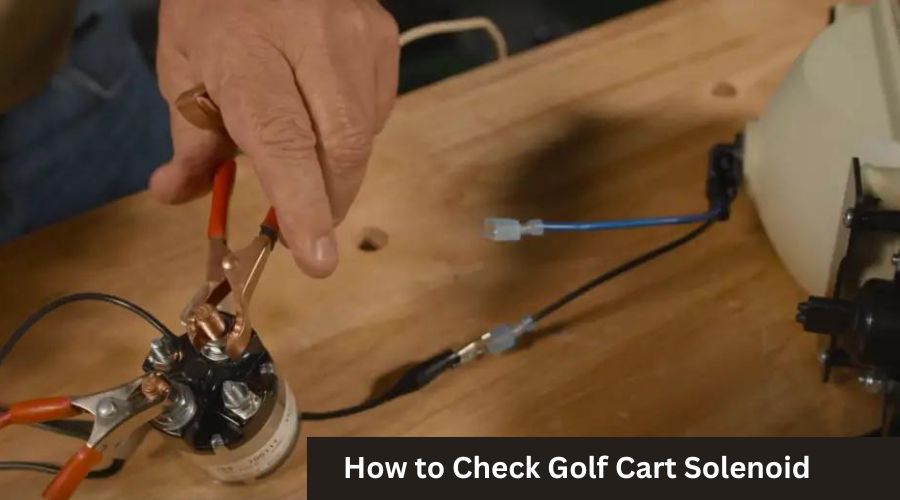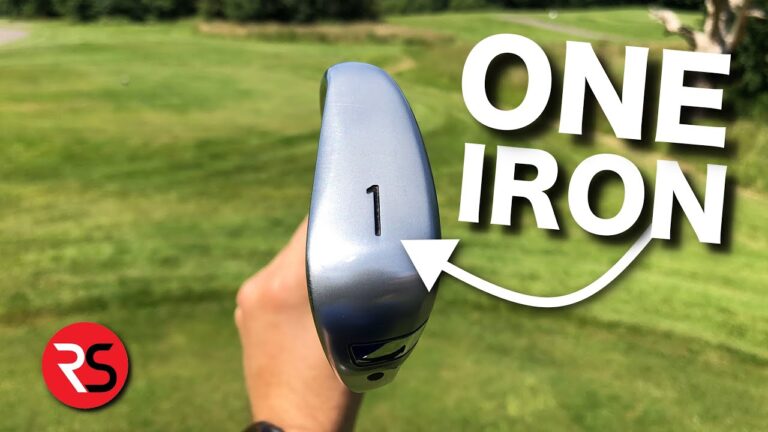To check a golf cart solenoid, use a multimeter to test the voltage across the small terminals. If the reading is close to the battery voltage, the solenoid is working.
If not, it may be faulty. Golf cart solenoids are crucial components that play a key role in the cart’s starting system. When a solenoid malfunctions, it can lead to issues such as the engine not turning over or the cart not moving.
In this blog post, we will discuss how to effectively check a golf cart solenoid to determine if it is in good working condition or if it requires replacement. We will explore common symptoms of a bad solenoid and provide step-by-step guidance on testing and troubleshooting the solenoid using a multimeter. By following these simple procedures, golf cart owners can ensure that their solenoids are functioning optimally, thereby maintaining the smooth operation of their carts.
Contents
- 1 Signs Of A Faulty Golf Cart Solenoid
- 2 Solenoid Basics
- 3 Preparation For Testing
- 4 Visual Inspection
- 5 Testing With A Multimeter
- 6 Interpreting Multimeter Results
- 7 Audible Testing Method
- 8 Common Issues And Fixes
- 9 When To Seek Professional Help
- 10 Maintenance To Prevent Solenoid Issues
- 11 Frequently Asked Questions
- 12 Conclusion
Signs Of A Faulty Golf Cart Solenoid
If your golf cart won’t start or move, it could indicate a faulty solenoid. To check the solenoid, set a multimeter to the DC voltage setting and connect the probes to the large terminal and the metal housing. When the cart is turned on and the accelerator pedal is pressed, the multimeter should display a voltage close to the battery.
No Start When Key Turned
If you turn the key on your golf cart and nothing happens, it could be a sign of a faulty solenoid. This is a common symptom of a bad solenoid in gas-powered carts, where the engine won’t turn over. In electric carts, you might hear a clicking sound, but the cart won’t move. If you notice this problem, it’s essential to test the solenoid and replace it if necessary.Intermittent Operation
Another sign of a faulty golf cart solenoid is intermittent operation. This means that the cart might start and run fine for a while, but then suddenly stop working. The solenoid might be failing to engage or stay engaged, causing the cart to stop functioning. If you experience this issue, you should test the solenoid and replace it if needed.Testing The Solenoid
To test the solenoid on your golf cart, you can use a multimeter to check for continuity and voltage. First, disconnect the battery and remove the solenoid from the cart. Then, use the multimeter to check the resistance across the two small terminals on the solenoid. A reading of zero or very low resistance indicates that the solenoid is working correctly. Next, set the multimeter to the DC voltage setting and connect the red probe to the large terminal on the solenoid and the black probe to the solenoid’s metal housing or ground. Turn on the golf cart and press the accelerator pedal. The multimeter should display a voltage reading close to the battery voltage. If you don’t get a reading or the reading is significantly lower than the battery voltage, it’s likely that the solenoid is faulty and needs to be replaced. In conclusion, a faulty golf cart solenoid can cause significant issues with your cart’s performance. By recognizing the signs of a bad solenoid, such as no start when the key is turned or intermittent operation, you can test the solenoid and replace it if needed. Proper maintenance and testing can help ensure that your golf cart runs smoothly and reliably for years to come.Solenoid Basics
To check a golf cart solenoid, perform a continuity test by using a multimeter to check the voltage across the two small terminals on the solenoid. If there is no response from the starter when you turn the key, it could indicate a faulty connection in the solenoid.
Function And Role In Golf Carts
A solenoid in a golf cart is a crucial component that acts as a switch to control the flow of electricity between the battery and the starter motor.
When you turn the key, the solenoid engages, allowing current to flow and starting the engine in gas carts or powering the motor in electric carts.
Electric Vs. Gas Cart Solenoids
Electric and gas cart solenoids serve the same purpose but differ in their design and operation based on the type of cart.
- Electric Cart Solenoids: Trigger the flow of electricity to power the motor and move the cart.
- Gas Cart Solenoids: Control the starting process by engaging the starter motor to ignite the engine.
Overall, understanding the basics of solenoids and their specific roles in golf carts is essential for diagnosing and resolving any potential issues that may arise.
Preparation For Testing
Before testing the golf cart solenoid, it’s crucial to ensure proper preparation for safety and accuracy. This includes disconnecting power and gathering necessary tools.
Safety First: Disconnecting Power
Safety should always be the top priority when working with any electrical components. To start, make sure the golf cart is turned off and the key is removed. Next, disconnect the main power source by either removing the battery cables or turning off the main power switch. This step is essential to prevent any electrical hazards during the testing process.
Gathering Necessary Tools
Having the right tools at hand will make the testing process much smoother and more efficient. The following tools will be required for testing the golf cart solenoid:
- Multimeter: To measure voltage and continuity.
- Wrench or socket set: For loosening and tightening connections.
- Safety gloves and goggles: To protect against any potential electrical hazards.
Visual Inspection
Before performing any electrical tests on a golf cart solenoid, it’s crucial to conduct a visual inspection to identify any visible signs of damage or corrosion. This initial step can help in determining potential issues that may affect the solenoid’s performance.
Checking For Physical Damage
Begin the visual inspection by checking for any physical damage on the exterior of the solenoid. Look for cracks, dents, or signs of wear and tear that may indicate potential problems. Ensure that the solenoid casing is intact and free from any visible damage that could affect its operation.
Identifying Corrosion Or Loose Connections
Inspect the solenoid for any signs of corrosion, especially around the terminals and connections. Corrosion can impede the flow of electrical current and lead to malfunctioning of the solenoid. Additionally, check for loose or corroded connections, as these can cause electrical resistance and affect the overall performance of the solenoid.
Testing With A Multimeter
When it comes to troubleshooting a golf cart solenoid, testing with a multimeter is a crucial step. A multimeter allows you to measure voltage and check for continuity, helping you determine if the solenoid is functioning properly. In this guide, we’ll walk you through the process of testing a golf cart solenoid using a multimeter, so you can diagnose any potential issues and ensure your golf cart runs smoothly.
Setting Up Your Multimeter
Before you begin testing the solenoid, it’s important to set up your multimeter correctly. First, ensure the multimeter is set to the DC voltage setting. Then, connect the red probe to the large terminal on the solenoid and the black probe to the solenoid’s metal housing or ground. This will allow you to measure the voltage across the large terminals of the solenoid.
Voltage Test Across Large Terminals
With the multimeter properly set up, turn on the golf cart and press the accelerator pedal. The multimeter should display a voltage reading close to the battery voltage. This test helps you determine if the solenoid is effectively transferring power from the battery to the cart’s motor, ensuring smooth operation.
Continuity Test On Small Terminals
After performing the voltage test, you can proceed to check for continuity on the small terminals of the solenoid. Use the multimeter to check for continuity across the two small terminals on the solenoid. This test allows you to verify if the electrical current can flow through the solenoid, indicating its proper functionality.
Interpreting Multimeter Results
When troubleshooting a golf cart solenoid, interpreting multimeter results is crucial for identifying potential issues accurately. Using a multimeter to measure voltage and continuity can provide valuable insights into the condition of the solenoid. Understanding the readings obtained from the multimeter can help diagnose problems and determine whether the solenoid needs to be replaced or repaired.
Understanding Voltage Readings
When checking the golf cart solenoid with a multimeter, understanding the voltage readings is essential. Set the multimeter to the DC voltage setting and connect the red probe to the large terminal on the solenoid and the black probe to the solenoid’s metal housing or ground. With the golf cart turned on and the accelerator pedal pressed, the multimeter should display a voltage reading close to the battery voltage. A significant deviation from the expected voltage may indicate a faulty solenoid.
What Continuity Indicates
Continuity testing is another important aspect of checking a golf cart solenoid. It helps determine if current can flow through the solenoid. To perform a continuity test, set the multimeter to the continuity or resistance setting and connect the probes to the small terminals on the solenoid. A continuous beep or a low resistance reading indicates that the solenoid has proper continuity, while no beep or a high resistance reading suggests a potential problem with the solenoid.
Audible Testing Method
When it comes to checking a golf cart solenoid, an effective method is using sound. The audible testing method involves listening for specific sounds to determine the solenoid’s functionality.
Listening For The Click
To test the solenoid audibly, turn on the golf cart and listen for a distinct clicking sound coming from the solenoid when the accelerator pedal is pressed.
What If There’s No Sound?
If there is no clicking sound, it could indicate a faulty solenoid that needs to be replaced. It is essential to address this issue promptly to ensure the proper functioning of the golf cart.
Common Issues And Fixes
To check a golf cart solenoid, set the multimeter to DC voltage, connect probes to terminals, then press the accelerator. A bad solenoid may cause the cart not to start or move. Test continuity to determine if the solenoid is faulty.
Dealing With High Amperage Failures
If your golf cart solenoid is experiencing high amperage failures, there are a few things you can do to fix it. One common issue is a faulty connection, so make sure all connections are clean and tight. Another issue could be a bad battery, so check the battery voltage and replace it if necessary. Additionally, a damaged or worn out solenoid can also cause high amperage failure, in which case it will need to be replaced.Addressing Faulty Connections
Faulty connections are a common issue with golf cart solenoids. If you suspect a faulty connection, start by checking the wiring harness for any signs of damage or wear. Make sure all connections are clean and tight, and replace any damaged wires or connectors. It’s also important to check the battery and charger connections, as these can also cause issues with the solenoid. If you’re unsure how to do this, consult with a professional or refer to your golf cart’s manual.Testing The Solenoid With A Multimeter
To check if your golf cart solenoid is working properly, you can use a multimeter. Set the multimeter to the DC voltage setting and connect the red probe to the large terminal on the solenoid and the black probe to the solenoid’s metal housing or ground. Turn on the golf cart and press the accelerator pedal. The multimeter should display a voltage reading close to the battery voltage. If the reading is significantly lower or higher, then your solenoid may be faulty and need to be replaced. Checking your golf cart solenoid is an essential part of maintaining your golf cart. By addressing common issues such as high amperage failures and faulty connections, you can ensure that your golf cart is running smoothly and efficiently. If you’re unsure how to test your solenoid or make any necessary repairs, consult with a professional or refer to your golf cart’s manual.When To Seek Professional Help
To determine if your golf cart solenoid is faulty, conduct a continuity test using a multimeter. Connect probes to terminals and check for a voltage reading close to the battery’s voltage when the cart is turned on. If the cart won’t start, it may signal a bad solenoid.
If you have attempted DIY testing but still encounter issues with your golf cart solenoid, it may be time to seek professional help. While basic troubleshooting can be done by yourself, certain situations require the expertise of a qualified technician.
Limitations Of Diy Testing
1. Limited diagnostic tools may hinder accurate assessment.
2. Inexperience can lead to misinterpretation of solenoid issues.
3. Complex solenoid problems may require specialized knowledge.
Finding A Qualified Technician
1. Research reputable golf cart repair shops in your area.
2. Verify technician certifications and experience with solenoid repairs.
3. Seek recommendations from fellow golf cart owners for reliable professionals.
Maintenance To Prevent Solenoid Issues
Regular maintenance of your golf cart solenoid is crucial to ensure its proper functioning and longevity. By incorporating a few simple practices into your routine, you can prevent common solenoid issues and avoid unexpected breakdowns.
Regular Check-ups
Performing regular check-ups on your golf cart solenoid can help you catch potential problems early on. Make it a habit to inspect the solenoid for any signs of wear or corrosion, and ensure that all connections are secure.
Keeping Connections Clean
One of the most important aspects of solenoid maintenance is keeping the connections clean and free of debris. Use a brush or cloth to gently clean the terminals and ensure a proper connection for optimal performance.
Frequently Asked Questions
How Do I Know If My Golf Cart Solenoid Is Bad?
If your golf cart won’t start or move, it could be a sign of a bad solenoid. To test it, use a multimeter to check the voltage across the two small terminals on the solenoid. A reading close to the battery voltage is good.
If there’s no response from the starter when you turn the key, it usually means there’s a faulty connection in the solenoid.
How To Test Solenoid On Golf Cart With Multimeter?
To test a golf cart solenoid with a multimeter, set it to DC voltage. Connect red probe to large terminal, black probe to housing/ground. Turn on cart, press accelerator. Multimeter should show voltage close to battery.
How Do I Know If The Solenoid Is Bad?
A bad solenoid may cause your golf cart to not start or move. To check, use a multimeter to test the voltage across the small terminals. If the starter doesn’t respond or there’s no engine cranking, it could indicate a faulty solenoid connection.
How To Test Solenoid With Multimeter?
To test a solenoid with a multimeter, set the multimeter to the DC voltage setting. Connect the red probe to the large terminal on the solenoid and the black probe to the solenoid’s metal housing. Turn on the golf cart and press the accelerator pedal to check for a voltage reading close to the battery voltage.
Conclusion
Checking your golf cart solenoid is crucial for diagnosing starting issues. Use a multimeter to test continuity and voltage. Symptoms of a bad solenoid include engine not turning over or no response when starting. Regular testing can prevent unexpected breakdowns.
Keep your golf cart running smoothly!






